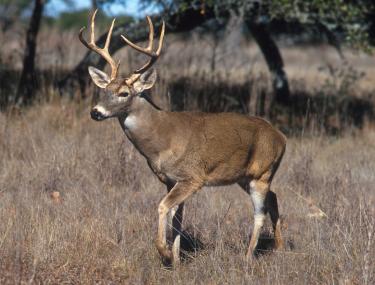Protecting Oak Woodlands
As a woodland owner, you can play an important part in protecting and restoring oak woodlands. These forest management activities can create just the right conditions for oaks—and boost the overall health of your woods too.
Thinning. Oaks grow best in woods that are open, where lots of sunshine can reach the forest floor. That means reducing the density of trees in your woods can protect the oaks you have and encourage new ones to grow. One way to reduce density is by thinning smaller, less desirable trees. You can do this on your own, by removing shrubs and smaller trees by mechanical means or with herbicides, or you can work with a commercial partner who harvests smaller trees for biomass or other products.
Harvesting. If you need to thin older, larger trees that have some commercial value, consider a careful harvest. Timber harvests can create more open, oak-friendly stands while providing some economic benefits as well. Three different harvesting methods promote oak growth by allowing more light into your woods: small-scale clearcut, seed-tree harvest, and shelterwood harvest.
- Small-scale clearcuts remove most or all of the woody vegetation in a small area of your woods. Then, you can regenerate oaks in that area by seeding it with acorns, planting oak seedlings, or tending to stump sprouts, the new growth that comes from the stump of a cut tree.
- Seed-tree harvesting is like a small-scale clearcut, except that some seed-producing trees (if you have them) are left standing to provide the seed for the next generation of oaks. Typically, only 3 to 10 trees are left per acre, which still allows lots of sunshine for new oaks to grow.
- Shelterwood harvesting selectively removes some big trees (including some of your oak) and the smaller, shade-tolerant trees that grow between oaks (such as maple and basswood). This option allows some of your existing oaks to mature and keeps a mix of ages in your woods while creating space for new oaks. As the younger oaks grow and become established, they may require more light and space, and you may need to remove the older oaks that sheltered them.
Prescribed burns. Because periodic fires were a natural and beneficial part of oak habitats, re-introducing fire to your woods can help protect oak health. Controlled fires can reduce competition from other, less fire-tolerant trees and enable oak seedlings to get established. These fires must be timed and managed correctly to avoid damaging acorns and seedlings, so make sure to consult a professional for training, assistance and any necessary permits before trying a burn on your own.
Controlling invasives and pests. Watch your oak woodlands for invasive plants, such as buckthorn and certain varieties of honeysuckle, excessive browsing by local deer, or signs of disease. Any of these can undermine your efforts to protect oak habitat.
These steps won’t just help you protect the oaks you have—they can also help you restore or create oak woodlands on your property.
How can I get more tips?
It’s simple! Enter your email below.

